It is the end of the line, almost. And of something else, too.
The 2023 Chevy Malibu is almost the last car Chevy still sells – not counting the Camaro and Corvette, which are high-performance coupes. The Malibu is the last sedan Chevy still sells – and Chevy once sold more sedans than GM sells vehicles, today.
In their place, crossovers and SUVs – which everyone else is selling, too. It makes you wonder whether it make more sense for Chevy to sell more of what everyone else isn’t, anymore – in order to sell more vehicles, again.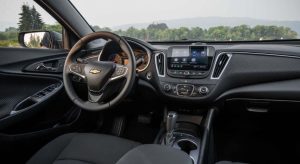
What It Is
The Malibu is the last mid-sized family sedan made by Chevrolet. It competes with import-brand family sedans such as the Toyota Camry, Honda Accord and Hyundai Sonata.
It’s an older design than its rivals – and (for what is probably its last year in production) comes with just one engine, irrespective of trim – with no option to buy a more powerful engine.
Prices start at $24,400 for the 1LS trim; there are also RS ($25,400) and 1LT trims ($27,800) trims, topping out at $31,200 for the 2LT trim.
Every trim comes standard with the same 1.5 liter engine, paired up with a continuously variable (CVT) automatic transmission.
What’s New for 2023
The previously available Prestige trim has been dropped – along with the previously available 2.0 liter turbocharged engine that came with it. A new 2LT trim replaces the Premier trim – in terms of most of the non-mechanical upgrades that came with that package last year – including standard 19 inch wheels, LED headlights, a dual-pane sunroof, heated steering wheel and leather seats.
But not all of them. Notably, the rear seat heaters that previously came with the Prestige trim.
These are not included with the new 2LT trim.
What’s Good
Costs a few thousand less to start than Camry and Accord.
Has several inches more backseat legroom than Sonata.
More conservative styling than its primary rivals.
What’s Not So Good
Underpowered standard – and only available – engine.
Rivals’ much stronger standard engines get better gas mileage.
Eight-year-old design that’s probably the last of the line.
Every Malibu trim comes standard with the same 1.5 liter four cylinder engine – which is an awfully small engine for a car this size. Engines this small used to be restricted to micro-cars, not mid-sized family cars.
The reason they are being installed in Malibu-sized cars is the bum’s rush being administered to engines, generally – in the name of the “climate crisis” that isn’t but which is being used as the excuse to justify “zero emissions” regulations that have the effect of downsizing engines from sixes to fours, then very small fours – and ultimately, no engines at all.
In favor of electric motors. Which produce their emissions elsewhere, but never mind. Everyone must play along – and some seem eager to play along.
GM being one of these.
The lack of power under the Malibu’s hood – or the option to buy more – is GM’s way of saying GM doesn’t care much whether anyone buys this car – which will probably be the last family car GM sells under the Chevy brand label.
Though it has the now-usual turbo to make up for its lack of size, the 1.5 liter engine only manages 160 horsepower and a paltry 184 ft.-lbs. of torque (at a comparatively high 2,500 RPM) which isn’t equal to the task of adequately propelling the mid-sized Malibu’s roughly 3,200 lb. curb weight. The car takes more than 8 seconds to attain 60, which is more than a second slower than the standard-engined Toyota Camry and Honda Accord – both of which come standard with much more power (203 horsepower for the Camry, 192 for the Accord).
This would be an ok trade-off if the Chevy got better gas mileage – but it doesn’t.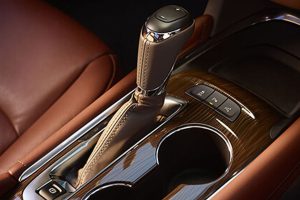
Equipped with its take-it-or-leave it 1.5 liter engine and standard continuously variable (CVT) automatic transmission, the Malibu carries an EPA rating of 29 city, 36 highway. This is great mileage, historically, for a mid-sized family car. But the Camry gets even better mileage – 28 city, 39 highway. So does the Accord, which rates 30 city, 38 highway. Ditto the other major player in the segment, Hyundai’s Sonata – which rates 28 city/38 highway and also comes standard with a much larger, much stronger 2.5 liter engine that offers 191 horsepower.
This Chevy was available with a 250 horsepower turbocharged 2.0 liter engine that gave Malibu buyers the option to keep up with the others in this class – but it’s been taken out of circulation. This leaves the Malibu hanging in the wind, so to speak – and not looking good.
Especially relative to rivals like the $24,150 to start Sonata – which is very price- competitive with the Malibu.
But relative to the Camry and the Accord, which start at $27,040 and $26,250 respectively, the Malibu only looks good as the bargain-priced alternative.
On The Road
One way to make electric cars look good is to make non-electric cars look bad. That seems to be GM’s intent with regard to the Malibu. It is not a bad car, as such. But – per the engine elaboration above – sending it out into the world with nothing more than 1.5 liters and 160 horses is to handicap the car relative to all three of its rivals. Why would GM do do that, if GM wanted the Malibu to compete with those rivals?
Well, the answer seems to be that GM does not want the Malibu to compete. It is letting the Malibu peter out – 2023 is probably the final year for this now eight-year-old design – and on the way out, the car is being both de-powered and de-contented (e.g., no more standard rear seat heaters for the 2LT). This can be interpreted as GM’s calculated attempt to make what it hopes to sell, going forward – that being electric cars – seem more appealing, as they do offer more power (and features) than the poor ol’ Malibu in its dotage.
Of course, the “electrified” stuff on deck will cost many thousands more than the Malibu – which is still a family car that family car buyers can afford. Compare it with the Chevy Bolt electric car – which is a compact-sized car and so not a family-sized car. It is also a car with a base price of $33,000 – which is “only” about $10k higher than the cost of the last-of-the-line Malibu.
It’s a shame, because the Malibu is a nice car, in addition to being an inexpensive car. It does not ride like a small car – which the Bolt is. Once it gets rolling, it is very comfortable for long trips on the highway – something the Bolt is not and cannot, insofar as its range is a pathetic 247 miles, best case. If you don’t drive it too fast. If it’s not too cold or hot out (and you don’t use the AC or heater much).
The Malibu’s range is 568 miles on the highway (458 in the city) on 15.8 gallons of gas that can be replaced in less than five minutes. Using the heater costs no range; use of the AC costs very little range.
But never mind. The “climate” is in “crisis” . . . and someone’s got to pay for it.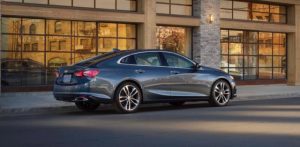
At The Curb
The Malibu is a slightly larger (longer) car than its rivals – 194.2 inches bumper to bumper vs. 192.1 inches for the Accord, 192.1 inches for the Camry and 192.9 inches for the Sonata.
It’s also a more proportionate car than at least one of its rivals – the Sonata – in terms of its allocation of front-and-rear-seat legroom. It has 41.8 inches of legroom up front and 38.1 inches in back. The Sonata touts a class-best 46.1 inches of legroom up front – which is comparable to the legroom you’d find in full-size luxury cars – but in back, just 34.8 inches, which is about what’s available in most compact-sized cars.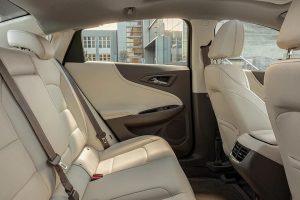
Only the Accord has more legroom in back (40.4 inches). It also has the largest-sized trunk (16.7 cubic feet). But the Malibu’s is almost-the-same size (15.7 cubic feet) and its back seats are amply roomy for a family.
The base LS trim is probably the best choice for a family car, too. Air conditioning, cruise control, a six speaker stereo and in-car WiFi hot spot are all standard – for just over $24k on the sticker.
Of course, more – in the way of amenities – can be bought, including automatic climate control AC, larger (17 and 19 inch) wheels (16 inch wheels are standard) and a dual-pane sunroof. All of these are nice upgrades but not necessary ones.
If all you’re looking for is a comfortable – and affordable – family car.
That brings up another – related – thing.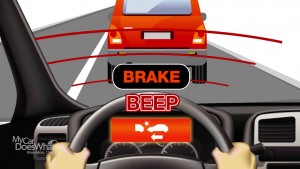
Because it is getting long-in-the-tooth and because it’s all-but-official that the 2023 Malibu will be the last Malibu and because it’s clear GM has lost interest in selling the Malibu – it is likely you’ll be able to get a much better deal on one than you could probably wrangle on the much-more-popular Camry, Accord or Sonata.
The Rest
There is one other thing about the Malibu you may really like – and that sets it apart from all the others in it class. This last-of-the-line Chevy’s family cars comes standard with no “advanced driver assistance technology.
No Lane Keep Assist. No Brake Assist. The steering doesn’t fight you. The brakes do not pre-empt you. There’s not even a back-up buzzer; you use your eyes instead. Chevy does offer “advanced driver assistance technology” – including Lane Keep Assist, Brake Assist, rear parking sensors and blind spot warning chimes. You can buy them as part of the optional Driver Confidence package.
Emphasis on optional.
All of the other cars come standard with these ugsome electronic driver pre-emption “technologies” – which they do because they are newer designs. When the current Malibu was designed back in 2016, “advanced driver assistance technology” was still – mostly – an affliction of higher-end cars, which touted them as a way to put distance between themselves and “less fancy” family cars like the Malibu. Now this “assistance” is all-but-ubiquitous.
If you’re one of those odd ducks who prefers to drive yourself – without constant correction – the Malibu is one of the few new cars that still lets you.
The Bottom Line
It’s not the pick of the manger anymore – but it’s worth a look if you’re looking for a sound family car that doesn’t treat you like an idiot child.
Got a question about cars, Libertarian politics – or anything else? Click on the “ask Eric” link and send ’em in! Or email me at EPeters952@yahoo.com if the @!** “ask Eric” button doesn’t work!
If you like what you’ve found here please consider supporting EPautos.
We depend on you to keep the wheels turning!
Our donate button is here.
If you prefer not to use PayPal, our mailing address is:
EPautos
721 Hummingbird Lane SE
Copper Hill, VA 24079
PS: Get an EPautos magnet or sticker or coaster in return for a $20 or more one-time donation or a $10 or more monthly recurring donation. (Please be sure to tell us you want a magnet or sticker or coaster – and also, provide an address, so we know where to mail the thing!)
My eBook about car buying (new and used) is also available for your favorite price – free! Click here. If that fails, email me at EPeters952@yahoo.com and I will send you a copy directly!


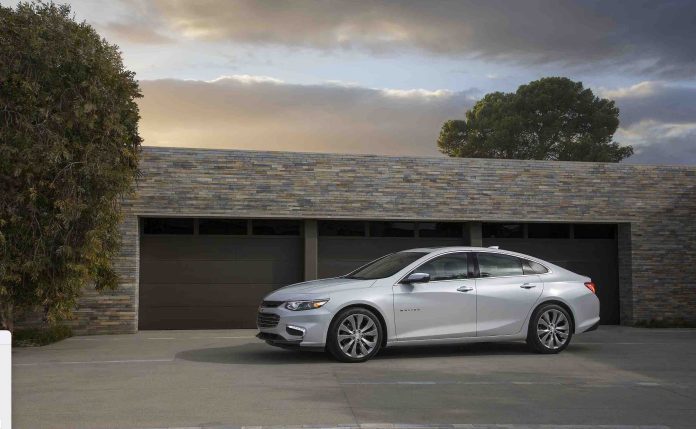










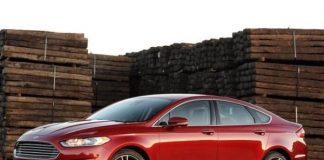
I got a Malibu as a rental recently, not sure the year. It was nice, I liked it generally, but it had ASS which I found infuriating.
Turn that off, put a stick shift in it, get rid of ABS /traction control while you’re at it, upgrade the engine to a 2.0 liter naturally aspirated, and you’ve got yourself a car I might actually want.
Its a shame about the Malibu, I own a 2015 Malibu it has the 2.5 . The engine isn’t bad when cruising but up a hill it’s a bit of a dog, so I can only imagine how a 1.5 would do? Chevy did a decent job on the style and interior to compete with rivals but as Eric said they are killing this car on porpoise. Mine will be paid off next month, with 130,000 miles it should last me a while longer.
I rented one of these a while back, a 2022 model so it musta had the 2.something liter 4 cyl. Wasnt a bad car, at all. Roomy inside and out, good trunk, not too much tech, good pep, quiet. This one (1.5L) sounds like a dog. And they wonder why people buy Hondas and Toyotas.
Hey, when is the “remote kill switch” coming on board? I need to buy a replacement car before that happens…
Hi Tom,
Yup. I’ve mentioned previously that GM no longer even lists the Malibu in its new vehicle press materials. Meanwhile, endless hum-jobs for the electric Hummer…
As far as the kill switch: Mandatory for all 2026 model year vehicles.
‘Every trim comes standard with the same 1.5 liter engine, paired up with a continuously variable (CVT) automatic transmission.’ — eric
Honestly, I wasn’t aware that the Chevy Malibu still existed.
But a 91-cubic-inch (in Oldspeak) engine hooked up to a CVT transmission means it probably shouldn’t.
‘GM does not want the Malibu to compete,’ concludes Eric. Agreed.
This tiny motorcycle-sized engine may exist for no reason other than to improve GM’s CAFE fleet mileage.
Earth to Mary Barra: winter is coming … economic winter for the auto market.
Costly EVs are exactly the WRONG product offering to survive the downturn, when customers themselves retreat into survival mode.
May GM’s second bankruptcy be its last. Chapter 7 for the win! 🙂
Hi Jim,
The tragic thing is that this car with a V6 would be a fine car. It is much more pleasant than the newer cars, not having all the “assistance” systems and a small touchscreen. But with a 1.5 engine and CVT it is not merely underpowered. It is likely to be a short-lived car.
GM deserves everything that follows.
sounds like they just threw in the towel with this one.
I’ve been wondering what happens when they either can’t make enough EVs or buyers reject them?
What’s happened and what’s happening to the Malibu is a CRIME! One of America’s most storied nameplates is about to go to the dustbin of history.
In past years, I looked at both the Malibu and Impala. They’re great cars, especially with the V6 engine. I can’t imagine using a 1.5L engine on it though. The turbo 1.5L on the Cruze is all right, but that’s a much smaller car. On a midsize car? Not so much.
” 🎶Baseball,Apple pie and….More EVs!🎵”
I thought all Chevy sedans were ALREADY kaput till I saw this article! More then a standard crime – damn near treason…… A few years ago I was considering an Impala when they came out with it’s last iteration , a good vehicle and decent value. Thought I’d “go out” with what I started with – my first car a 1968 Impala Sport(fastback), yes – wish I still had it!
Hi Jack,
GM’s media site – the place journalists go to get tech specs and so on – doesn’t even list the Malibu as part of Chevy’s model lineup. They obviously want it to go away. So they can focus on eeeeeeeveeeees.
Just for not having assist I’d buy one if in the market for a car this size. It’d be a “big” car in Scotland and the only roads that really need a bit of power are motorways(interstates) and even then my low powered Dacia copes just fine, it’s a lot lighter though. My car has very limited “assist”, hill start and traction abs stuff. The new model has more so I’m keeping this one until it or I dies!
Hi Robert,
The number of new cars that are not afflicted with these “assistance” features is dwindling to near-nil. Within three years and perhaps sooner, there will be none that are not so afflicted. Who actually wants this stuff? And why does the McOwned McCar McPress continue to tout them as desirable?
GM assumes too much thinking that buyers will go with an electric replacement for the Malibu. Especially if they owned the last gas Malibu and found it lame. A turbo 1.5 is no replacement for what should be a 3.5 V6. A V6 that was never offered in this generation of the Malibu, so it’s been hobbled by little engines for its whole run.
What will happen in actuality is that buyers will go with other brands like Kia or Toyota since they still offer this type of car. They problem with continuing to cede sales to other makers, due to no offering, is they often never come back.
A always broken Chevy Chevette made my aunt a solid Honda buyer. She will never return to GM.
Hi Rich,
Yup. I think this car shows GM’s contempt for cars – and car buyers. It embodies a deliberate refusal to cater to the market; a big Fuck You to buyers of non-electric cars, which GM hopes buyers will shortly have no choice about buying, if they want a new car.
That’s been GM’s attitude towards the small car buyer since 1960…
soon to be replaced with a car with short range lithium fire bomb batteries….lol
Average EV range
What test drivers are actually getting driving in the real world driving EV’s is they are getting 2.4 miles of range for every kwh
For a 90 kwh battery the range is 2.4 miles x 90 kwh = 216 miles, but you can only use 60% of that range so the real range is 129 miles in ideal conditions, 30 mph, flat road, no wind, 70 degrees out, no accessories on, AC, etc…
Lots of these batteries are far less then 90 kwh so their range will be far worse. If it is 45 kwh battery divide these numbers by two.
In not ideal conditions, like when it is very cold out, the range drops 50% so the range is 65 miles now. 65 mile range forget about buying an EV….lol
AT WOT…wide open throttle the range drops 90%, on a race track a tesla at WOT used 80 miles range in 8 miles….lol…..if you tow something, the same problem.
NOTE: If you use fast chargers a lot it will ruin the battery in your EV, it will lose 50% of it’s range, if you don’t use fast chargers it takes forever to recharge
NOTE: you can only use 60% of the battery capacity…… between 30% and 90%. using the battery below 30% you can damage the battery, charging above 90% can damage the battery and cause a fire. So you can only use 60% of the range advertised…..
Fast charging?…start a fire….lol
Extreme fast chargers, for example,can push battery pack temperatures to 270ºC…514ºF after just a few minutes of charging. Charging times are so long they are putting in extreme fast chargers that ruin the battery and could start a fire….lol……these EV’s are so bad they are trying all sorts of dangerous crap to make them work.
After 100,000 miles the battery needs to be replaced for $22,000
https://www.autonews.com/mobility-report/auto-auction-houses-grapple-pricing-used-evs?fbclid=IwAR0mKicHSKqt2ccO796kiQ7w6PNqfYXS-0RW6sIhILnxykbKvjb0R9Q_9JU
Indeed, Anon –
It just floors me that any sane person would willingly want to give up a car that can go 500-plus miles that costs around $25k for a much smaller car that goes maybe 200 miles – maybe – that costs $35k.
But then, I think most people simply have no clue what “electrification” really means – not having had it explained to them.